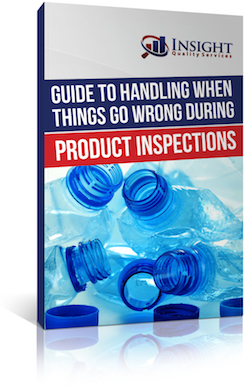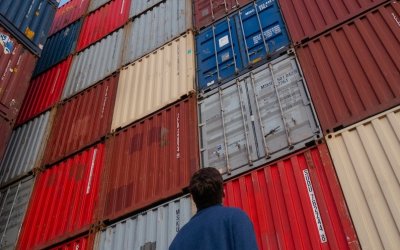When importing consumer products, it is vital to understand the different supply chain risks that might affect your business and take appropriate steps to mitigate them. These risks can manifest themselves in many forms, from political unrest to container shortages to raw material shortages and more.
This article introduces some different types of risks that impact consumer product importers with global supply chains. It also discusses the basics of managing the supply chain risks you face.
Table of Contents
Understanding Internal vs. External Supply Chain Risks
It is essential to understand that there are two types of supply chain risks. According to Business Queensland, there are internal risks, those that your business has some level of control over, and external risks, those driven by events upstream or downstream in the supply chain.
Internal Risks are less complicated and less costly to manage, as they fall within your company’s responsibilities, but they are still often unavoidable. Examples include disruptions in your workflow or processes, personnel changes, ineffective management, or a lack of contingency planning.
External Risks are more challenging to identify and predict, and they can be more costly to overcome, but you can create plans to mitigate them. Examples include the miscalculation of demand for your products, political unrest in your supplier’s country, or a disruption in the flow of parts due to quality failures — companies importing parts and products from overseas face a myriad of external risks.
Some Major Supply Chain Risks Affecting Global Trade
Supply chain managers need to be aware of many types of external supply risks. DHL’s Resilience360 Annual Risk Report from early 2020 lists ten supply chain risk trends impacting supply chains. Among them are:
- Trade Policy Shifts, such as last year’s January 15 U.S.-China trade agreement and the U.S.-Mexico-Canada (USMCA) agreement.
- Economic Sanctions, including U.S. export control restrictions on sensitive technologies and the targeting of Chinese tech firms as part of the trade war.
- Environmental Regulation Changes, such as the International Maritime Organization (IMO) requiring low-sulfur fuels for shipping vessels and winter production halts in China to control emissions.
More recently, we’ve seen that the COVID-19 pandemic has impacted trade in many ways. Demand shocks, such as retail stores closing in the U.S. and Europe, have made it more difficult for companies to move products.
Supply shocks, such as shortages of critical materials and components from Asia, have led to an inability to satisfy demand. And in recent months, the global container shortage has caused shipping costs to skyrocket. With so many types of risks involved in international trade, how do importers take steps to manage them?
How Should Importers Manage Risks in Their Supply Chain?
With so many risks that can disrupt the flow of goods to your customers, it is important to consider risk mitigation strategies. Mckinsey & Company suggests taking a practical approach to supply chain risk management, which involves thinking of your risks in terms of known and unknown risks.
Unknown Risks are impossible or difficult to foresee — for example, the risk of new disease outbreaks or natural disasters like earthquakes and hurricanes. Managing these risks involves building strong defenses to identify and mitigate them and developing a risk-aware culture.
Known Risks, however, are easier to identify and can be measured over time. To manage known risks, McKinsey recommends that you conduct a thorough risk assessment to identify all the risks that might affect your business, develop a framework for managing them, and perform ongoing monitoring.
For example, you might identify that quality failure is one of the known risks you face. To address it, you might develop a quality control plan that outlines all of your ongoing quality control activities. These could include regularly conducting pre-shipment inspections at your suppliers’ facilities. And you could establish KPIs based on your inspection report data and look at trends with your suppliers over time.
Whatever risks your business faces, this framework offers a helpful way to approach managing them. And if you are conducting product inspections, it is beneficial to know how to approach situations in which your inspections fail. To learn more about this, we recommend reading our Guide to Handling When Things Go Wrong During Product Inspections.
Free Guide: What to do When Things Go Wrong
When a quality problem happens – and they will – how you approach the problem makes all the difference in successfully squelching it.
Learn how to deal with the problem at hand, see potential quality gaps throughout your supply chain, and take proactive measures to avoid future problems.





0 Comments